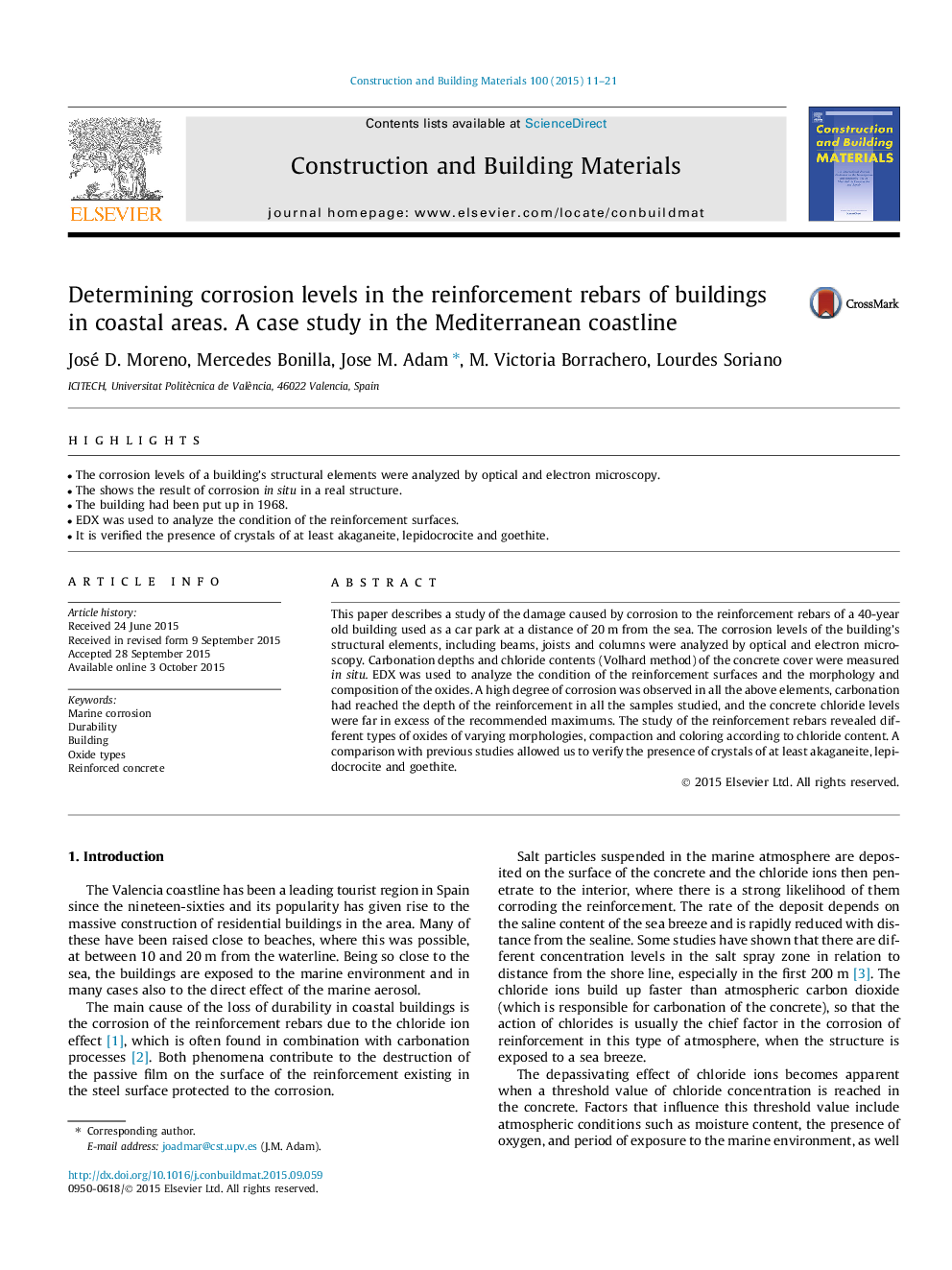| Article ID | Journal | Published Year | Pages | File Type |
|---|---|---|---|---|
| 256535 | Construction and Building Materials | 2015 | 11 Pages |
•The corrosion levels of a building’s structural elements were analyzed by optical and electron microscopy.•The shows the result of corrosion in situ in a real structure.•The building had been put up in 1968.•EDX was used to analyze the condition of the reinforcement surfaces.•It is verified the presence of crystals of at least akaganeite, lepidocrocite and goethite.
This paper describes a study of the damage caused by corrosion to the reinforcement rebars of a 40-year old building used as a car park at a distance of 20 m from the sea. The corrosion levels of the building’s structural elements, including beams, joists and columns were analyzed by optical and electron microscopy. Carbonation depths and chloride contents (Volhard method) of the concrete cover were measured in situ. EDX was used to analyze the condition of the reinforcement surfaces and the morphology and composition of the oxides. A high degree of corrosion was observed in all the above elements, carbonation had reached the depth of the reinforcement in all the samples studied, and the concrete chloride levels were far in excess of the recommended maximums. The study of the reinforcement rebars revealed different types of oxides of varying morphologies, compaction and coloring according to chloride content. A comparison with previous studies allowed us to verify the presence of crystals of at least akaganeite, lepidocrocite and goethite.
